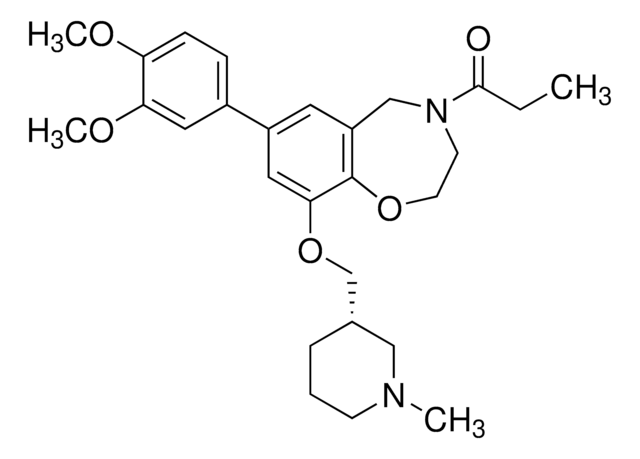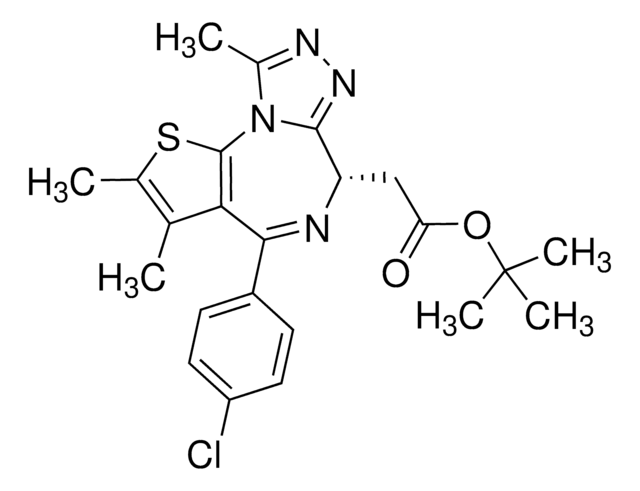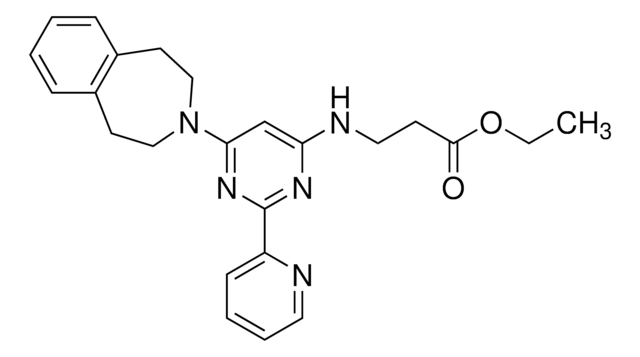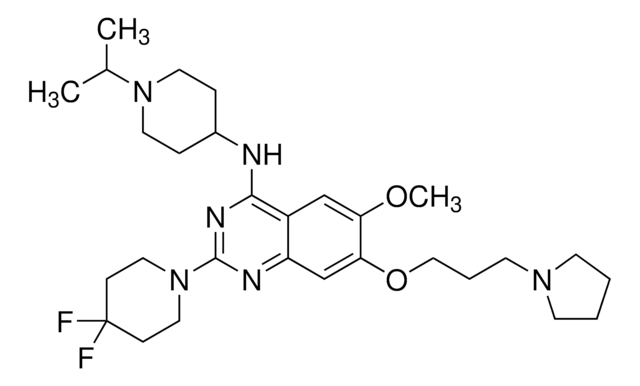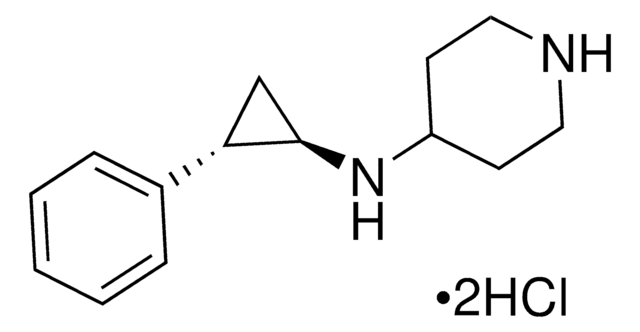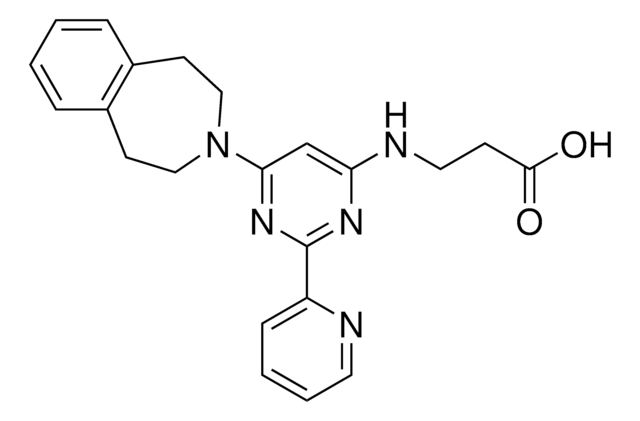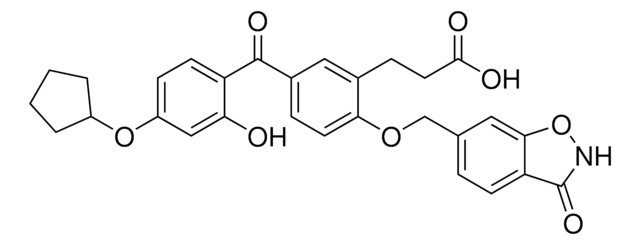Kluczowe dokumenty
SML1133
SGC-CBP30
≥98% (HPLC)
Synonim(y):
2-[2-(3-Chloro-4-methoxyphenyl)ethyl]-5-(3,5-dimethyl-1,2-oxazol-4-yl)-1-[(S)-2-(morpholin-4-yl)propyl]-1H-benzimidazole
About This Item
Polecane produkty
Próba
≥98% (HPLC)
Formularz
powder
kolor
white to beige
rozpuszczalność
DMSO: 10 mg/mL, clear
temp. przechowywania
2-8°C
ciąg SMILES
CC1=C(C(C)=NO1)C2=CC=C3C(N=C(CCC4=CC=C(OC)C(Cl)=C4)N3C[C@@H](N5CCOCC5)C)=C2
InChI
1S/C28H33ClN4O3/c1-18(32-11-13-35-14-12-32)17-33-25-8-7-22(28-19(2)31-36-20(28)3)16-24(25)30-27(33)10-6-21-5-9-26(34-4)23(29)15-21/h5,7-9,15-16,18H,6,10-14,17H2,1-4H3/t18-/m0/s1
Klucz InChI
GEPYBHCJBORHCE-SFHVURJKSA-N
Zastosowanie
Działania biochem./fizjol.
To learn about other SGC chemical probes for epigenetic targets, visit sigma.com/sgc
Cechy i korzyści
Inne uwagi
produkt powiązany
Zwroty wskazujące rodzaj zagrożenia
Zwroty wskazujące środki ostrożności
Klasyfikacja zagrożeń
Aquatic Chronic 4
Kod klasy składowania
11 - Combustible Solids
Klasa zagrożenia wodnego (WGK)
WGK 3
Temperatura zapłonu (°F)
Not applicable
Temperatura zapłonu (°C)
Not applicable
Wybierz jedną z najnowszych wersji:
Certyfikaty analizy (CoA)
Nie widzisz odpowiedniej wersji?
Jeśli potrzebujesz konkretnej wersji, możesz wyszukać konkretny certyfikat według numeru partii lub serii.
Masz już ten produkt?
Dokumenty związane z niedawno zakupionymi produktami zostały zamieszczone w Bibliotece dokumentów.
Nasz zespół naukowców ma doświadczenie we wszystkich obszarach badań, w tym w naukach przyrodniczych, materiałoznawstwie, syntezie chemicznej, chromatografii, analityce i wielu innych dziedzinach.
Skontaktuj się z zespołem ds. pomocy technicznej